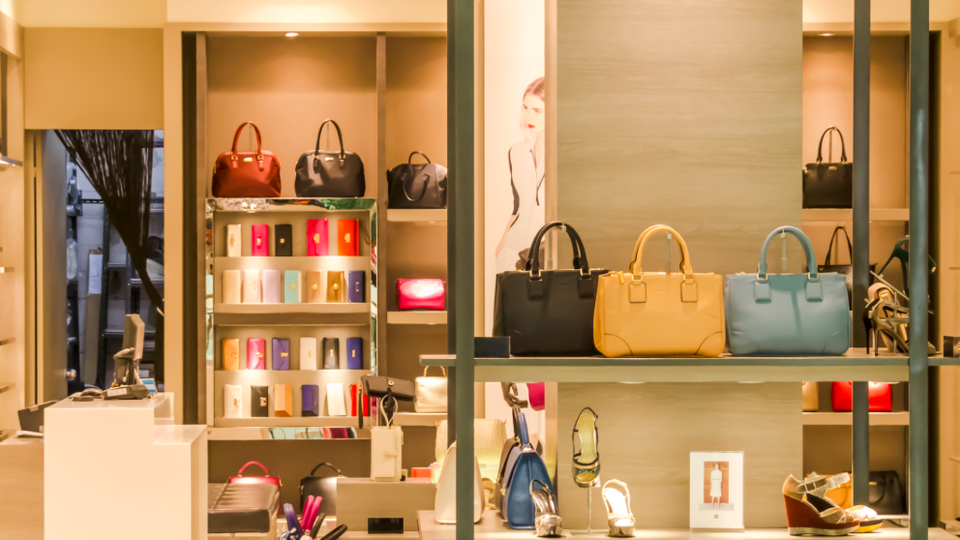They say once is an event, twice is a coincidence and three times is a trend. After yet another major luxury e-commerce piece of news was released recently, it is safe to say that luxury e-commerce is seriously starting to kick into gear. Luxury Society reports on the recent coverage.

They say once is an event, twice is a coincidence and three times is a trend. After yet another major luxury e-commerce piece of news was released recently, it is safe to say that luxury e-commerce is seriously starting to kick into gear. Luxury Society reports on the recent coverage.
Although luxury brands such as Chanel, TAG Heuer and Burberry have been selling online for some time, one recent disruption in luxury e-commerce world occurred when LVMH’s announced their new e-commerce platform for the Moët Hennessy wine and spirits division.
Business of Fashion, and subsequently multitudes of other publications, reported on the news. The site, named Clos19, sells luxury wine and spirits from brands including Moët & Chandon, Krug, Veuve Clicquot, Dom Pérignon, Château d’Yquem, Hennessy, Glenmorangie, Ardbeg and Belvedere. The products, which are available in the UK only for the time being, sit alongside editorial content and services like 24-hour delivery. In addition, Clos19 also sells what the company calls ‘exceptional experiences’ including a luxury travel expedition to Antarctica.
Join Luxury Society to have more articles like this delivered directly to your inbox
Starting with the UK is a wise decision given that research from Euromonitor shows the UK is the third biggest market for online retail in the world, behind the USA and China. In addition, the data (which uses sources from trade and national statistics) forecasts that the UK will have the highest market value of online retail in Europe, by 2021.

Clos19 homepage celebrates the fine art of hosting.
Bloomberg also reported that LVMH’s chief financial officer Jean-Jacques Guiony said they would be ramping up multi-brand e-commerce across the company, with a new site for its luxury department store Le Bon Marché in the works.
From web to wardrobe in 90 minutes
Earlier in April Bloomberg released that London-based fashion technology company Farfetch had announced a partnership with Gucci clothing and accessories, in what the company called “The Store of the Future.” The software and devices aim to help luxury brands gather information on customers in store and online.
The partnership allows customers to shop for Kering-owned Gucci products and have it fulfilled within 90 minutes from Gucci stores in cities including London, New York and Tokyo. Farfetch also showcased in-store technology that will enable customers to "log-in" with a smartphone when they enter a store, meaning the sales staff will be able to view the customer’s profile, including purchase history or even wish lists online.
From WeChat to We Buy?
Jing Daily recently reported on the collaboration between Thomas Ye shi, aka Gogoboi, one of China’s top KOLs (key opinion leaders), and a number of Western luxury e-commerce sites. Gogoboi announced the official launch of his own WeChat boutique “Bu Da Jing Xuan (不大精选)”, on his WeChat account.

Unlike his previous mono brand partnerships, Gogoboi’s new boutique sells a selection of luxury goods from an array of international luxury e-commerce retailers including Yoox, Net-A-Porter, Farfetch, Revolve, Mytheresa.com, and SSENSE, as well as department stores such as Harrods and Luisa Via Roma.
The collaboration is a clever way to connect with wealthy Chinese customers looking for instant purchase power, as WeChat makes the ‘see now, buy now’ model possible. Readers can purchase items directly through Gogoboi’s articles, with the boutique also offering customer service between 8am and midnight, 7 days a week.
Luxury Beauty Sitting Pretty Online
Luxury Daily recently revealed that among beauty consumers, online shopping is becoming an enticing option. Once thought of as more of an ‘offline’ category, where customers would need the help of a physical product to touch, A.T. Kearney’s report suggests that consumer appetite for luxury beauty e-commerce is growing at a steady rate. Luxury beauty products are more popular online than that of mass-market beauty products, with penetration rates at 14% and 7% respectively.
Would you buy a $45k watch online?
In February, Bloomberg News reported on the partnership between Hodinkee and Vacheron Constantin who had come together to sell 36 limited-edition watches online. The Cornes de Vache 1955 timepieces cost $45,000 each, and were exclusively available via the Hodinkee website. It was the first time in the brand’s 260-year history that the watchmaker sold a product exclusively through the Internet.
This month NET-A-PORTER unveiled an exclusive pop-up shop with Cartier and the Panthère de Cartier watch. The collection of 12 models, priced from £3,200 to £133,000, are exclusively available for one month via the pop-up before being sold in all Cartier boutiques and authorised watch dealers. Customers were able to sign up for the waiting list from the end of April.

Image Courtesy of NET-A-PORTER
The future of luxury e-commerce?
McKinsey & Company predicts that online sales of luxury goods will triple in the next 10 years, and that by 2025, the online share of total luxury sales will reach 18%.
What seems to be clear is that there is no blueprint for launching luxury e-commerce, with each brand taking its time to decide the best way to address their digitally savvy audience. The success of e-commerce seems to lie in ensuring a clear synergy with the brand dynamics and customer needs.
Interested in accelerating your brand’s e-commerce revenues?
One thing that does stand out however, is the power of limited edition and limited time luxury e-commerce. Luxury shoppers seem happy to open their wallets for products previously thought of as out of reach for online shopping baskets when there is a chance they could be one of a few to get it. Thus linking back to the original pull of luxury in the first place: exclusivity.









